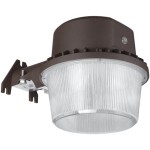Outdoor Brick Tile: A Durable and Elegant Choice for Patios
Outdoor patios serve as extensions of the home, providing spaces for relaxation, entertainment, and connection with nature. The selection of appropriate paving materials is paramount in ensuring the patio's longevity, aesthetic appeal, and functionality. Among the numerous options available, outdoor brick tile stands out as a compelling choice, offering a harmonious blend of durability, classic aesthetics, and design versatility. This article will delve into the key advantages of using outdoor brick tile for patios, exploring its characteristics, installation considerations, and maintenance requirements.
Unmatched Durability and Longevity
One of the primary reasons for the enduring popularity of outdoor brick tile is its exceptional durability. Manufactured from kiln-fired clay, brick is inherently resistant to a wide range of environmental stressors. Freeze-thaw cycles, a common challenge in many climates, pose minimal threat to properly installed brick patios. The dense composition of the fired clay inhibits water absorption, thus reducing the risk of cracking and spalling during periods of freezing temperatures. Furthermore, brick is resistant to fading from prolonged exposure to sunlight, ensuring that the patio retains its color and aesthetic appeal for years to come. The inherent strength of brick also makes it capable of withstanding heavy foot traffic and the weight of outdoor furniture without significant wear and tear.
The longevity of outdoor brick tile translates to significant cost savings over the lifespan of the patio. While the initial investment may be comparable to other paving materials, the reduced need for repairs and replacements makes brick a cost-effective solution in the long run. The inherent durability of the material minimizes the likelihood of needing to replace cracked or damaged tiles, reducing both material and labor expenses. Moreover, the enduring aesthetic appeal of brick means that the patio will not require frequent updates or renovations to maintain its visual interest.
Beyond withstanding physical stress, brick's resistance to biological threats is also noteworthy. Unlike some organic paving materials, brick is not susceptible to rot or decay. This makes it a particularly suitable option for patios located in damp or shaded areas where fungal growth might be a concern. The inert nature of the clay also prevents it from providing a food source for insects or rodents, further contributing to its long-term structural integrity.
The durability of brick is further enhanced by its relatively low maintenance requirements. Properly installed brick patios are resistant to staining from common outdoor spills, and any accumulated dirt or debris can typically be removed with simple cleaning methods. The inherent strength of the material minimizes the risk of damage from routine cleaning procedures, ensuring that the patio remains in optimal condition for years to come.
Classic Aesthetics and Design Versatility
Beyond its functional advantages, outdoor brick tile offers a timeless aesthetic appeal that complements a wide range of architectural styles. The natural earthy tones and textures of brick create a warm and inviting ambiance, enhancing the overall visual appeal of the outdoor space. The inherent beauty of brick lies in its simplicity and its ability to seamlessly integrate with both traditional and contemporary designs. Whether used in a formal garden setting or a casual outdoor living area, brick adds a touch of sophistication and charm.
The design versatility of outdoor brick tile extends beyond its inherent color and texture. Brick is available in a wide range of sizes, shapes, and laying patterns, allowing for a high degree of customization in patio design. From the classic herringbone pattern to more intricate geometric designs, brick offers endless possibilities for creating unique and visually appealing surfaces. The modular nature of brick also simplifies the process of incorporating curves and other design features into the patio layout.
Furthermore, the ability to combine different colors and textures of brick allows for the creation of visually striking patterns and borders. Contrasting colors can be used to define specific areas of the patio or to create focal points. The use of different bond patterns can also add visual interest and create a sense of depth. The inherent adaptability of brick allows designers to tailor the patio to the specific aesthetic preferences of the homeowner.
The enduring appeal of brick ensures that it remains a relevant and stylish choice for outdoor patios. Unlike some trendy paving materials that may fall out of favor over time, brick maintains its classic appeal and continues to be a popular choice among homeowners and designers. The timeless quality of brick ensures that the patio will remain aesthetically pleasing for years to come, adding value and charm to the property.
The aesthetic benefits of outdoor brick tile extend beyond its visual appeal. The natural texture of brick provides a slip-resistant surface, making it a safer option for patios, especially in areas prone to moisture. The inherent thermal properties of brick also contribute to a more comfortable outdoor environment by moderating surface temperatures. In warm climates, brick can help to keep the patio cooler by reflecting sunlight, while in cooler climates, it can retain heat, creating a more comfortable space for outdoor activities.
Installation Considerations and Best Practices
While outdoor brick tile offers numerous advantages, proper installation is critical to ensuring its long-term performance and aesthetic appeal. A well-constructed brick patio will last for decades, while a poorly installed patio may be prone to problems such as cracking, settling, and weed growth. Therefore, it is essential to follow established best practices for brick patio installation.
The first step in the installation process is proper site preparation. This involves excavating the area to the required depth and ensuring that the subgrade is properly compacted. A stable and well-drained subgrade is essential for preventing settling and ensuring the long-term stability of the patio. In areas with poor drainage, it may be necessary to install a drainage system to prevent water from accumulating beneath the patio surface.
Next, a base layer of compacted gravel is installed over the subgrade. The gravel base provides additional drainage and helps to distribute the weight of the patio evenly. The thickness of the gravel base will depend on the soil conditions and the anticipated traffic load. A layer of landscape fabric is typically placed between the subgrade and the gravel base to prevent weed growth.
A setting bed, typically composed of sand, is then applied over the gravel base. The setting bed provides a level surface for the brick tiles and allows for minor adjustments in height. The sand should be clean and free of organic matter to prevent weed growth and promote drainage. The brick tiles are then placed on the setting bed in the desired pattern.
After the brick tiles have been laid, the joints between the tiles are filled with sand or mortar. Sand-filled joints allow for flexibility and movement, while mortar-filled joints provide a more rigid surface. The choice between sand and mortar will depend on the desired aesthetic and the anticipated traffic load. The joints should be completely filled to prevent weed growth and ensure the stability of the patio.
Proper edging is also essential for maintaining the integrity of the patio. Edging can be made from a variety of materials, including brick, concrete, or metal. The edging should be securely anchored to prevent lateral movement of the brick tiles. The edging also provides a clean and defined border for the patio.
Finally, sealing the brick patio can help to protect it from staining and weathering. A sealant can also enhance the color of the brick and make it easier to clean. The type of sealant used will depend on the type of brick and the desired finish. It is important to follow the manufacturer's instructions when applying sealant.
While DIY installation of a brick patio is possible, it is generally recommended to hire a professional contractor with experience in brick paving. A professional contractor will have the necessary tools and expertise to ensure that the patio is installed correctly and will stand the test of time. They can also provide guidance on design options and material selection.
In summary, outdoor brick tile offers a compelling combination of durability, aesthetic appeal, and design versatility, making it an excellent choice for patios. Its resistance to weather, wear, and biological threats ensures long-lasting performance, while its classic beauty enhances the appeal of any outdoor space. By adhering to proper installation practices, homeowners can enjoy the benefits of a brick patio for many years to come.

Brick Porcelain Tile

Marion Ceramics Thin Pavers Bricktile Products

Outdoor Living Brick Industry Association

40 Paver Patio Ideas To Help You Design Your Outdoor Space

10 Outdoor Patio Flooring Trends Blog Quorn Stone

7 Flooring Options For A Beautiful Patio Absolutely Outdoors
/101267782-dffdc648643b4a14b325ff535c0141ba.jpg?strip=all)
How To Build A Broken Brick Patio

How To Choose Outdoor Tile Patterns Of Plains Elevate Your Garden Hyperion Tiles

16 Great Patio Ideas For Homeowners Who Want More Living Space

5 Benefits Of Installing A Brick Paver Patio Mutualmaterials Com








